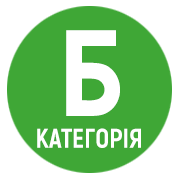PHRASEOLOGISMS AS REPRESENTATIVES OF MILITARY DISCOURSE
DOI:
https://doi.org/10.32689/maup.philol.2023.1.5Keywords:
eophrase, phraseological unit, phraseological neoplasms, picture of the world, cognitive reproduction.Abstract
The article is devoted to the analysis of neo-phrases of military discourse that appeared during the full-scale invasion of Russia into the territory of Ukraine. Since idioms have become certain markers of linguistic picture of the world of military discourse formation, their study has gained great importance for understanding the complete picture of the world of Ukrainians during the war. The aim of the article is to analyze of new or already existing, but with a new meaning, phraseology in the functioning of the linguistic picture of the world during the war. In accordance with the goal, the task was set: to analyze neophrases of the period of the full-scale invasion of Russia on the territory of Ukraine; identify the main thematic subgroups of neophrases; to establish which phraseological components were the most active in the specified period; to find out how the picture of the world of Ukrainians during the war is objectified through the peculiarities of cognitive reproduction at the level of phraseological neoplasms. Scientific novelty. Neophrases of the thematic field of war can be divided according to their origin, namely, into the author’s sayings of politicians, defenders, mass media, cultural and artistic figures, etc., as well as folk ones. Key in a significant number of neophrases are such lexemes as Ukraine, Victory, Armed Forces of Ukraine. A separate group consists of phraseological units with a toponym component. Geographical name as a component has a motivational value that coordinates and organizes the multiple semantic components of onyms. Also characteristic of neophrases of the war period is the use of proper names, since these linguistic units are the fastest responding to cultural, political and historical events in society. Many phraseological units are formed with a certain key verb. Verbs that are used in the form of the imperative mood, as a rule, express wishes, requests, needs. A group of phraseological units built on antonymic basis is singled out, most of them are contextual antonyms. A separate group consists of phraseological units with an animalistic component (zoonym or ornithonym, while usually phraseological units with a zoo component reflect certain human traits that are formed on the basis of the correlation of stereotypes of the animal world and human traits, however, in neophrases of the war period they have a personified role of the natural world with full support in the fight against the enemy. The land was and is an important symbol of life and freedom for Ukrainians, so it is quite obvious that a group of phraseological units with this component was formed. Another group is formed by neophrases of a humorous or sarcastic nature, they are, as a rule, a certain form of psychological protection or mocking the enemies shortcomings.
References
Глуховцева І. Я. Динамічні процеси у фразеології української мови. Філологічний часопис, 2018. Вип. 1 (11). С. 13–20.
Власенко Л. В., Тригуб І. П. Фразеологічні одиниці та їх класифікація. Науковий вісник Міжнародного гуманітарного університету. Сер.: Філологія, 2019. № 39. Т. 3. С. 10–13.
Вознюк Ю. Неосемантизми в складі нових українських фразеологізмів. Науковий вісник Ужгородського університету. Серія: Філологія, 2020. № 44. Т. 2. С. 459–462.
Ідзьо М. В. Фразеологічні одиниці як засоби мовної експресивізації в текстах сучасних польських ЗМІ. Мовознавство, 2016. № 3. С. 69–76.
Крилаті вислови на варті України: прислів’я та приказки українською, англійською, арабською, китайською, німецькою, перською, польською, румунською, словацькою, турецькою, угорською, французькою, чеською мовами : глосарій / авт. колектив. Київ : 7БЦ, 2022. 188 с.
Лисецька Н. До питання актуальних фразеологічних інновацій сучасної німецької мови. Науковий вісник Східноєвропейського національного університету імені Лесі Українки. Філологічні науки. Мовознавство, 2015. № 3. С. 254–259.
Максимова А. Я. Класифікація інноваційної фразеології сфери економіки та бізнесу. Вчені записки ТНУ імені В. І. Вернадського. Серія: Філологія. Журналістика, 2022. Т. 33 (72), № 2. Ч. 1. С. 235–238.
Патен І. «Ковідний синдром» у масмедійній фразеології (на матеріалі української та англійської мов). Проблеми гуманітарних наук: збірник наукових праць Дрогобицького державного педагогічного університету імені Івана Франка. Серія «Філологія», 2021. № 48. С. 122–129.
Пашинська Л. М. Походження фразеологічних неологізмів (на матеріалі сучасних українських ЗМІ). Науковий вісник кафедри ЮНЕСКО Київського національного лінгвістичного університету. Філологія, педагогіка, психологія, 2010. Вип. 20. С. 56–62.
Пашинська Л. М. Детермінологізація як спосіб формування неофразем у сучасному українськомовному мас-медійному просторі. Вісник Київського національного лінгвістичного університету. Серія: Філологія, 2017. Т. 20, № 1. С. 97–102.
Сизонов Д. Ю. Нова медійна фразеологія в бізнес-комунікації. Актуальні проблеми української лінгвістики: теорія і практика, 2015. Вип. 31. С. 44–57.
Стишов О. А. Неофраземи в суспільно-політичному дискурсі українських мас-медіа. Філологічні студії : збірник наукових праць, 2015. Вип. 4. С. 19–23.






